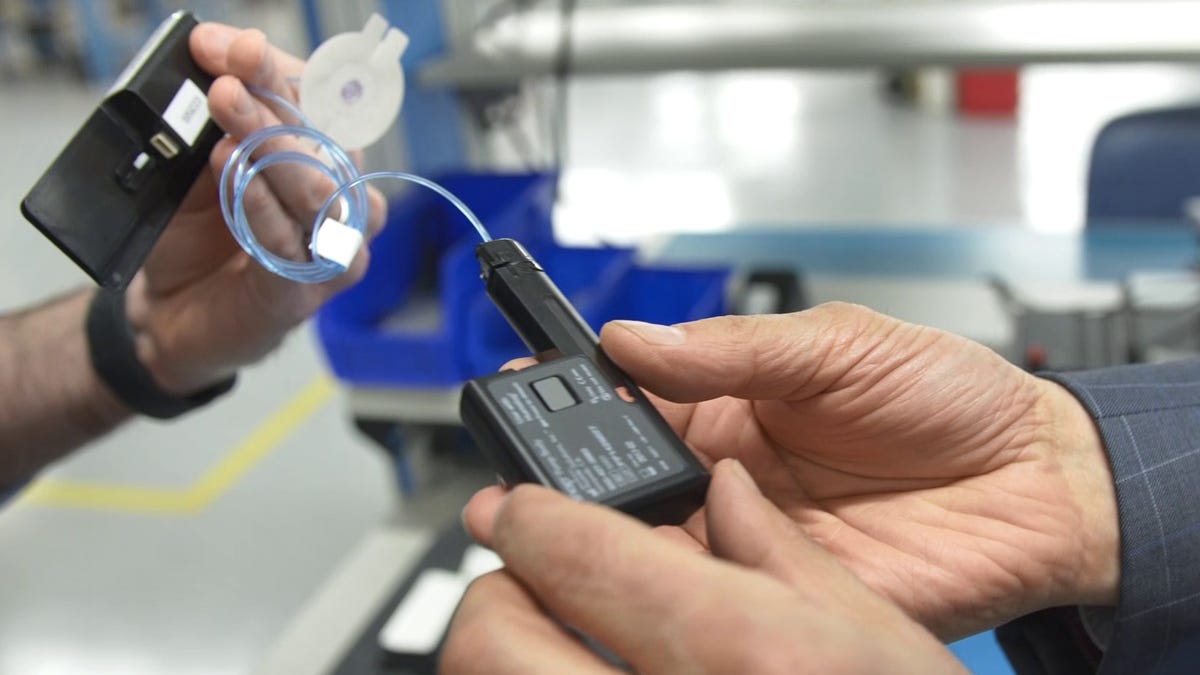Closed-loop insulin tech for diabetes will change lives
The so-called artificial pancreas is on the verge of commercial expansion.

The Bigfoot closed-loop insulin system consists of an Abbott Freestyle Libre wearable wireless glucose monitor (not shown), a blood glucose computer (left) and an insulin pump (right) connected via a thin tube to a cannula for injection. The two main parts shown snap together in use to form a single compact unit.
From the outside, diabetes may look like a simple condition to manage but it's actually a constant math test where the right answer is nebulous and the stakes range as high as death. But a new technology about to get broader commercial release could make insulin management the self-driving car of endocrinology.
People managing diabetes today can wear a wireless stick-on sensor to track blood glucose without finger sticks, and a pump to administer insulin without an injection pen or syringe. But the person remains in the loop, between the sensor and pump, managing and authorizing insulin delivery throughout their day. Closed-loop technology mostly removes the person from the process and delivers insulin to their body in a smart, real-time trickle, with the exception of mealtimes when a manual extra dose is still required.
Bigfoot Biomedical is one of several startups planning to bring this tech to a broader market in 2019. Its system gets blood glucose data from an Abbott Freestyle Libre stick-on monitor. Then Bigfoot's proprietary smart pump calculates and delivers an appropriate trickle of insulin through the day via a thin tube and a small wearable injection patch. It's a lot of paraphernalia, but people who need to administer insulin are used to that.
The results of moving from occasional finger sticks and self-dosing to a system that delivers insulin automatically and dynamically could be dramatic for people managing diabetes: Eliminating high or low glucose swings that result from inattention, inexperience or sleep, while virtually eliminating the constant "math test" insulin calculations as well.
Bigfoot's pump module is an exercise in miniaturization, using a standard battery that doesn't need recharging and a standard cartridge (upper right) of the type of insulin required. This half of the smart pump is actually discarded after use but Bigfoot plans to offer a recycling program for it.
Bigfoot is far from the only firm moving in this space, a sign that it's a vital one: Medtronic's 670G was the first closed-loop system on the market in summer of 2017, Tandem Diabetes Care is planning a launch in second half of 2019 and Tidepool is working to formalize the DIY community's Loop system in a model not unlike that which grew Linux.
The closed-loop concept began with users frustrated that managing diabetes in children, during sleep and in general was a time-consuming, often hit-and-miss process well into the 21st century. Nearly a decade ago some of them began to hack their own closed-loop systems and OpenAPS (Open Artificial Pancreas System) open-source software arrived about five years ago to run on a Raspberry Pi and codify closed-loop DIY hacks.
The wearable wireless sensors that all closed-loop systems use offer a less direct measure of glucose than a simple blood-drop test, and a wearable pump, line and cannula may seem a bit like Frankenstein's monster to some people. But a closed-loop revolution is coming in several areas of connected health, and diabetes may be a key initial battleground in adjusting consumer expectations while also driving manufacturers to make the tech more transparent.
The diabetes hacking community's slogan is #wearenotwaiting. This is a technology that shouldn't have to worry about finding a market.

